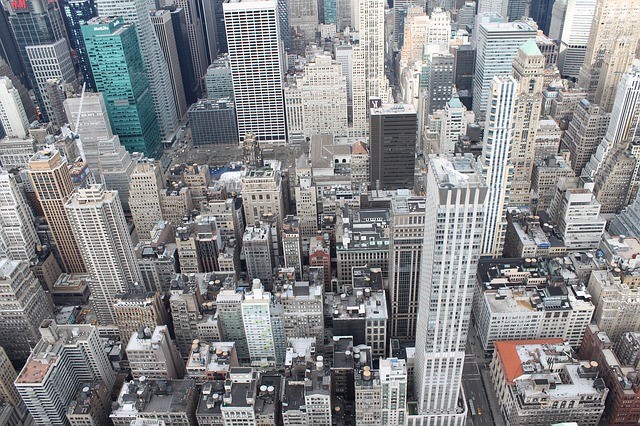October 24, 2017
Ambitious energy efficiency plans in some cities are signposts for what's to come: hotter summers, colder, snowier winters – and higher utility bills.
New York City has already put independent local regulations in place, looking ahead to the money-saving benefits of energy efficiency and how changes today will influence city successes tomorrow. In September, Mayor Bill de Blasio announced New York would be the first city in the U.S. to mandate that building owners considerably reduce greenhouse gas emissions, with penalties for not complying.

Commercial and residential buildings contribute 39 percent of CO2 greenhouse gas emissions in the U.S. every year, according to the U.S. Green Building Council – more than transit or industry (PDF). That, combined with weather data showing fluctuating temperatures and weather events at different times of year, is pushing many locales across the U.S. to address efficiency options for building management.
Oregon's 2017 summer set daily temperature records in August, closing businesses early and affecting the Portland area's mass transit system. U.S. cities in New Hampshire and Washington State set cold temperature records this summer, in June and September, respectively. Two winters ago, Boston and surrounding towns received more snow than the areas had ever seen since the beginning of recorded history.
In New York, the local government's sustainability plans may be anticipating what the climate could look like in future years. The costs of operating and maintaining buildings are already high, and the city's wide variety of types of buildings mean there is a huge range of energy uses. New York's sustainability plans include updating older buildings to improve performance, which will in turn help the buildings use power more efficiently.
New York already requires owners of large buildings in the city to comply with four pieces of energy-related regulations: energy benchmarking, conservation for renovation projects, auditing and retro-commissioning measures, and lighting upgrades and sub-metering.
These strategies from one of America's most iconic cities are driving more energy efficient building regulations and legislation across the U.S. Many cities already penalize building owners for non-compliance with benchmarking regulations, and legislators across the U.S. are independently pushing forward with climate plans that focus on building energy efficiency.
Many cities are supporting building owners in complying with these types of regulations, but addressing building energy performance is a new and unfamiliar task for many of those who are responsible. As more jurisdictions, including Washington, D.C., San Francisco, Seattle, and many others adopt enhanced building energy requirements, energy management solutions grow in importance.
SOL VISTA's Skywalk® software analyzes all data needed to inform the decisions around energy efficiency, and automatically keeps buildings in compliance with local requirements. SOL VISTA's team also works to stay ahead of building energy legislation and its experience handling efficiency projects in both new and old buildings saves customers significant dollars while also keeping them in compliance and avoiding fines and penalties.
Skywalk®, SOL VISTA's proprietary SaaS platform, empowers commercial building owners and managers to improve the performance and profitability of their buildings.
